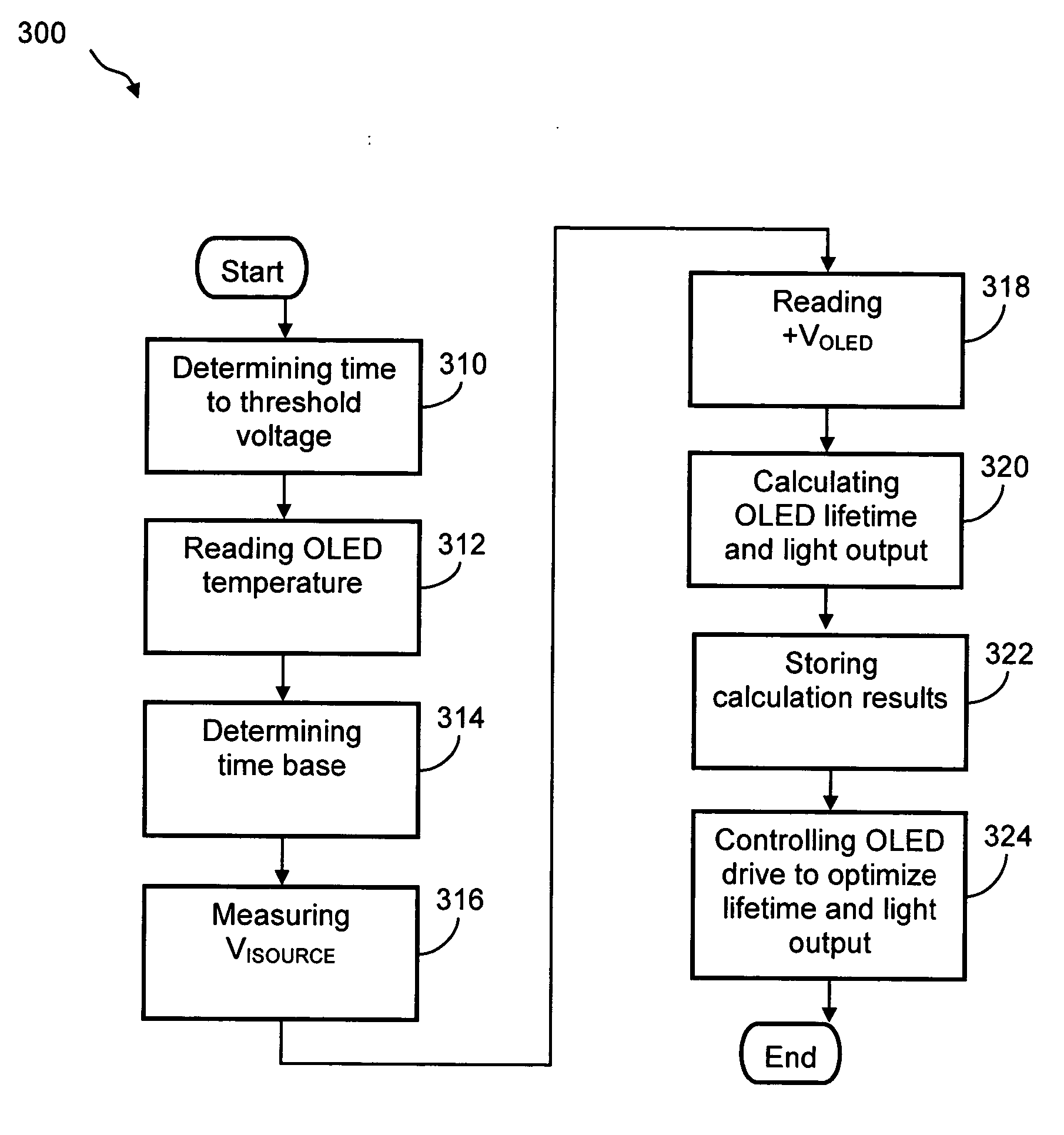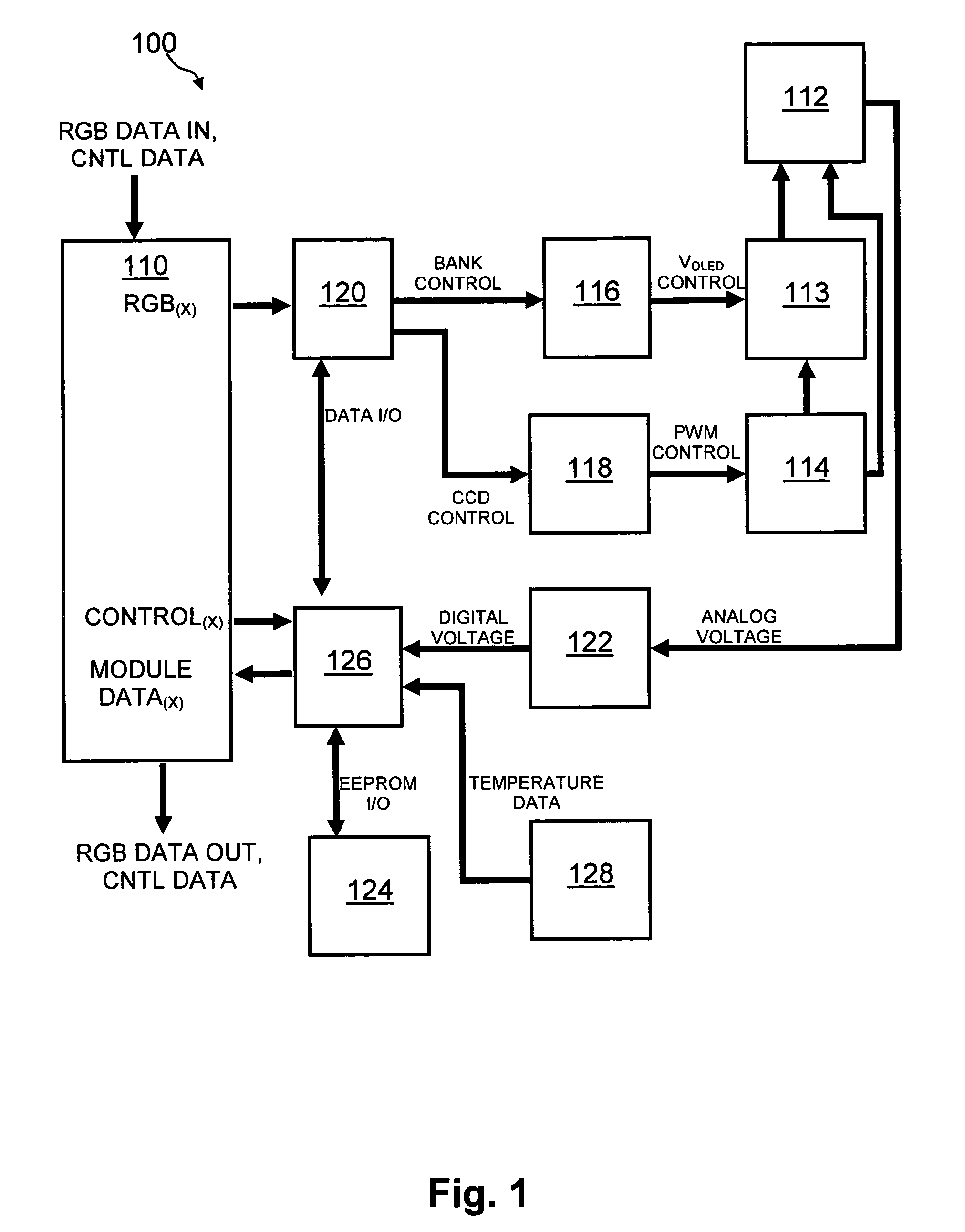Method and system for measuring and controlling an OLED display element for improved lifetime and light output
a technology of oled display element and measurement method, which is applied in the field of modulear organic lightemitting diode (oled) display, can solve the problems of lcds not meeting the high resolution and speed requirements of lcds fail to provide the bright, high light output, and large viewing angle that the large-screen display market demands, and the use of oled technology in large-screen display applications such as outdoor or indoor stadium displays, large marketing
- Summary
- Abstract
- Description
- Claims
- Application Information
AI Technical Summary
Benefits of technology
Problems solved by technology
Method used
Image
Examples
Embodiment Construction
The present invention will be described with respect to particular embodiments and with reference to certain drawings, but the invention is not limited thereto but only by the claims. The drawings described are only schematic and are non-limiting. In the drawings, the size of some of the elements may be exaggerated and not drawn on scale for illustrative purposes.
The present invention will mainly be described with reference to a single display but the present invention is not limited thereto. For instance, the display may be extendable, e.g. via tiling, to form larger arrays. Hence, the present invention may also include assemblies of pixel arrays, e.g. they may be tiled displays and may comprise modules made up of tiled arrays which are themselves tiled into supermodules. Thus, the word display relates to a set of addressable pixels in an array or in groups of arrays. Several display units or “tiles” may be located adjacent to each other to form a larger display, i.e. multiple d...
PUM
 Login to View More
Login to View More Abstract
Description
Claims
Application Information
 Login to View More
Login to View More - R&D
- Intellectual Property
- Life Sciences
- Materials
- Tech Scout
- Unparalleled Data Quality
- Higher Quality Content
- 60% Fewer Hallucinations
Browse by: Latest US Patents, China's latest patents, Technical Efficacy Thesaurus, Application Domain, Technology Topic, Popular Technical Reports.
© 2025 PatSnap. All rights reserved.Legal|Privacy policy|Modern Slavery Act Transparency Statement|Sitemap|About US| Contact US: help@patsnap.com



